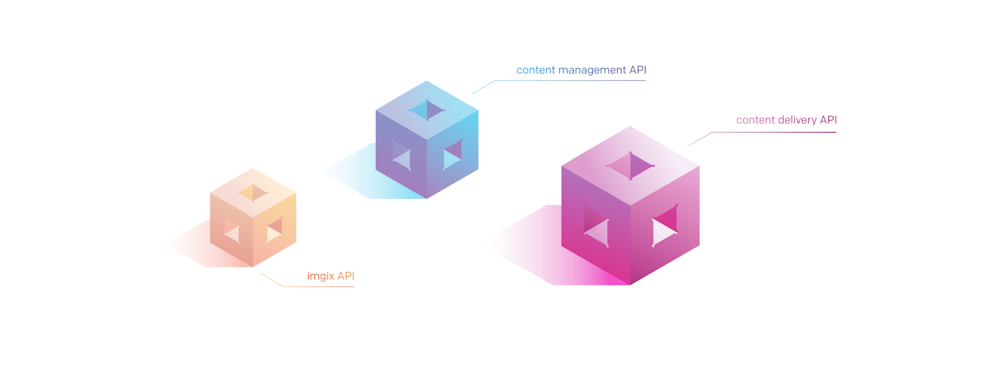What is exactly a Headless CMS? Simply put, a content management system without a coupled front-end, the “head”, is called headless and consists of one or more APIs as well as the back-end technology required to store and deliver content.
The difference between a Traditional CMS and a Headless CMS
To understand what it means, let’s first take a step back to define traditional Content Management Systems. A classic CMS allows you to create and upload content through a back-end, publish it and show it on the front-end without the need for any additional components. In layman’s terms, your editors are writing on the back-end of the same system your website visitors are viewing.
Although it is a very convenient system, it is often limiting because it works best with a single website. When you start to manage multiple sites and applications simultaneously, you find yourself in the situation of having to juggle between CMS instances and transfer content from one to another when it is shared.
A headless CMS, on the other hand, focuses only on the management of pure content, offering an administrative back-end for its creation, collaboration and organization. It does not deal with the front-end, like the presentation layer, providing access to all his content via API.
While it may seem a step back, headless CMSs are, on the contrary, a way to respond to the business’s need of engaging customers at all stages of the customer journey with a multichannel digital experience. The digital scenario has evolved, and the rigidity of the monolithic systems has become a limitation. Companies need structured content that can be easily used on multiple platforms, while traditional CMSs are still bound on web pages content frameworks.
On the other hand, headless CMSs manage pure content without a presentation layer attached. In this way, just one instance of it can be used to serve it on any device: desktop, mobile, applications, Internet of Things devices, Virtual Reality, Augmented Reality, smartwatches etc.
The headless approach allows a business to provide content as a service, abbreviated as CaaS, which means that separate software handle content storage and delivery.

The difference between Decoupled CMS and Headless CMS
A decoupled CMS has some similarities with pure headless CMS because it is also a front-end agnostic platform. The main difference is that a decoupled CMS offers front-end delivery tools, ready to be used out of the box. It doesn’t use a traditional database like monolithic solutions, so front-end and back-end communicate via API calls. Even though the back-end and the front-end application function independently of one another, the front-end architecture is still anchored to a single delivery environment. The downside to a decoupled approach is that the back-end is still limited to a chosen front-end, so moving content quickly to cross-platform can be problematic.
Headless CMSs, on the other hand, are not weighed down by a predetermined front-end, providing great flexibility to publish content on any platform. Thanks to an API-first approach, a pure headless CMS allows content to be always separate from a presentation layer, future-proofing it. The content becomes a service that can be called by anything and become part of a microservice architecture.
The merits of an API-first approach
The IoT-era has drastically changed the way consumers interact with a brand. Users consume content now through many different devices and applications, not just smartphones and desktop web experiences. Every touchpoint in the customer journeys needs to look good and work properly.
Thanks to an API-first approach, brands can create and structure content once via a headless CMS and then repurpose it via API for any channel, device or touchpoint. This method speeds up production significantly, giving you a faster time-to-market.
A cloud-native API-first solution like DatoCMS also helps with maintenance costs and security: no database means less unknown vulnerabilities and gateways that someone could exploit. All your dynamic content is safely stored and managed in your CMS.
Flexibility makes your business smarter
A headless CMS API-first offers unparalleled flexibility compared to the other categories on the market.
Here are a couple of reasons why.
The developers are not forced to speak the language of the CMS, so that they can use the best one for the project.
With just a few scripts, it is easy to transfer all content from one platform to another, so you never risk a vendor lock-in situation.
Editors can produce vibrant content without having to operate within limits imposed by a CMS or a unique front-end, thus allowing the whole team to work on the properties simultaneously without fear of errors.
Brands can integrate their marketing tools and analytics services seamlessly via API, creating a tailored customer experience platform.
The content must never be adapted based on the touchpoint in which it will be displayed (or listened to), thus becoming reusable even in the future on devices that do not yet exist.
See first-hand how it works
Try DatoCMS with a free account. No credit card required; it lasts forever.
Read more about it
Read our blog for more insights and opinions or visit our complete Guides and Tutorials for a deep-dive in DatoCMS' technology.
